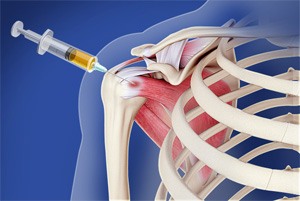Introduction: In the realm of sports medicine, a groundbreaking evolution has dawned upon us—one that transcends conventional approaches and embraces the awe-inspiring potential of regenerative therapies and orthobiologics. This convergence of science and healing arts is rewriting the playbook for athletes and individuals seeking recovery from musculoskeletal injuries. Let’s embark on a journey through the realms of regenerative sports medicine and orthobiologics to unravel their transformative impact.
Understanding the Essence of Regenerative Sports Medicine: In the quest for optimal recovery, regenerative sports medicine stands as a beacon of hope. At its core, this paradigm emphasizes harnessing the body’s innate capacity to heal itself. Through a spectrum of cutting-edge techniques like platelet-rich plasma (PRP) therapy, stem cell treatments, and prolotherapy, this approach unlocks nature’s potential for regeneration.
Unveiling Orthobiologics: Nature’s Healing Arsenal: Orthobiologics, a pivotal component in this landscape, introduces a repertoire of biological substances and therapies derived from the body itself or natural sources. From growth factors and cytokines to bone marrow aspirate concentrate (BMAC) and hyaluronic acid injections, these interventions foster tissue repair, mitigate pain, and enhance the healing cascade.
Navigating the Intersection: The fusion of regenerative sports medicine and orthobiologics marks a paradigm shift in treatment methodologies. Their synergy amplifies the body’s healing mechanisms, offering a beacon of hope for athletes and individuals grappling with tendon injuries, ligament strains, osteoarthritis, and more. The personalized nature of these therapies tailors healing to an individual’s unique biology, fostering not just recovery but a resurgence in performance and quality of life.
The Promise and Potential: Beyond the realms of traditional medicine, this amalgamation holds promise for reshaping the landscape of sports injuries and degenerative conditions. It’s not merely about treating symptoms; it’s about rejuvenating tissues, restoring function, and rekindling the vitality that injury might have dimmed.
The Human Touch in Healing: Amidst the scientific marvels, the human touch remains the cornerstone. Compassionate care, guidance, and collaboration between patients, practitioners, and specialists pave the way for a holistic healing journey. Education, empowerment, and a shared vision for wellness knit together the fabric of a successful recovery.
Challenges and Future Horizons: As with any pioneering domain, challenges exist—be it regulatory frameworks, standardization of procedures, or access to these innovative treatments. Yet, the potential to refine these therapies, broaden accessibility, and further research heralds an exciting era for regenerative sports medicine and orthobiologics.
Conclusion: In this symbiotic realm where science converges with the body’s innate wisdom, the narrative of healing transcends conventional boundaries. Regenerative and sports medicine and orthobiologics intertwine to offer not just relief from pain but a renaissance in how we perceive recovery. As we stride forward, let us embrace this harmonious blend of nature’s potential and scientific prowess, heralding a future where healing isn’t just a restoration, but a transformation.

